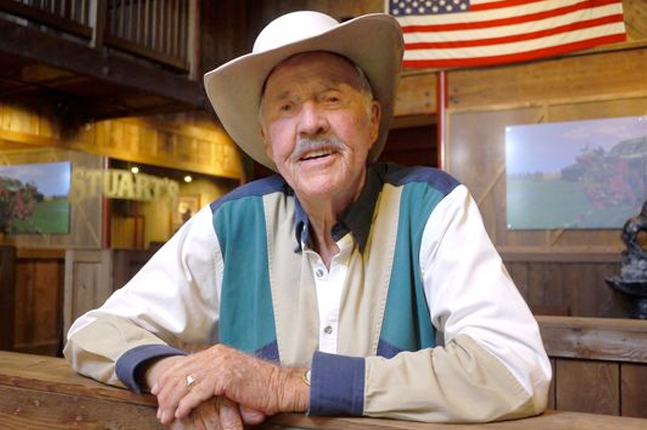Henry Grantland Rice was born in Murfreesboro, Tennessee, the son of Bolling H. Rice, a cotton dealer, and his wife, Beulah Grantland Rice. His grandfather Major H. W. Rice was a Confederate veteran of the Civil War.
Rice attended Vanderbilt University in Nashville, where he was a member of both the football and baseball team, a brother in the Phi Delta Theta Fraternity, and graduated with a BA degree in 1901. After taking early jobs with the Atlanta Journal and the Cleveland News, he later became a sportswriter for the Nashville Tennessean. Afterwards he obtained a series of prestigious jobs with major newspapers in the Northeastern United States. He is best known for being the successor to Walter Camp in the selection of College Football All-America Teams beginning in 1925, and for being the writer who dubbed the great backfield of the 1924 Notre Dame Fighting Irish football team the “Four Horsemen” of Notre Dame. A Biblical reference to the Four Horsemen of the Apocalypse, this famous account was published in the New York Herald Tribune on October 18, describing the Notre Dame vs. Army game played at the Polo Grounds:
Outlined against a blue-gray October sky the Four Horsemen rode again. In dramatic lore they are known as famine, pestilence, destruction and death. These are only aliases. Their real names are: Stuhldreher, Miller, Crowley and Layden. They formed the crest of the South Bend cyclone before which another fighting Army team was swept over the precipice at the Polo Grounds this afternoon as 55,000 spectators peered down upon the bewildering panorama spread out upon the green plain below.
The passage added great import to the event described and elevated it to a level far beyond that of a mere football game. This passage, although famous, is far from atypical, as Rice’s writing tended to be of an “inspirational” or “heroic” style, raising games to the level of ancient combat and their heroes to the status of demigods. He became even better known after his columns were nationally syndicated beginning in 1930, and became known as the “Dean of American Sports Writers”. He and his writing are among the reasons that the 1920s in the United States are sometimes referred to as the “Golden Age of Sports”.
His sense of honor can be seen in his own actions. Before leaving for service in World War I, he entrusted his entire fortune, about $75,000, to a friend. On his return from the war, Rice discovered that his friend had lost all the money in bad investments, and then had committed suicide. Rice accepted the blame for putting “that much temptation” in his friend’s way. Rice then made monthly contributions to the man’s widow for the next 30 years.
According to author Mark Inabinett in his 1994 work, Grantland Rice and His Heroes: The Sportswriter as Mythmaker in the 1920s, Rice very consciously set out to make heroes of sports figures who impressed him, most notably Jack Dempsey, Babe Ruth, Bobby Jones, Bill Tilden, Red Grange, Babe Didrikson Zaharias, and Knute Rockne. Unlike many writers of his era, Rice defended the right of football players such as Grange, and tennis players such as Tilden, to make a living as professionals, but he also decried the warping influence of big money in sports, once writing in his column:
Rice authored a book of poetry, Songs of the Stalwart, which was published in 1917 by D. Appleton and Company of New York.
Rice married Katherine Hollis in 1906; they had one child, the actress Florence Rice. Rice died at the age 73 on July 13, 1954, following a stroke.





